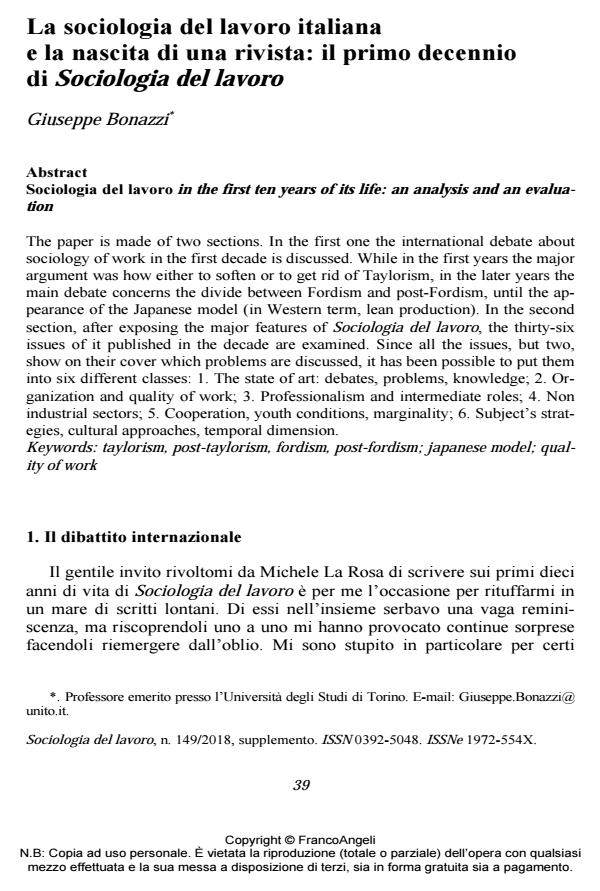Sociologia del lavoro in the first ten years of its life: an analysis and an evaluation
Journal title SOCIOLOGIA DEL LAVORO
Author/s Giuseppe Bonazzi
Publishing Year 2018 Issue 2018/149 suppl.
Language Italian Pages 19 P. 39-57 File size 189 KB
DOI 10.3280/SL2018-149S05
DOI is like a bar code for intellectual property: to have more infomation
click here
Below, you can see the article first page
If you want to buy this article in PDF format, you can do it, following the instructions to buy download credits

FrancoAngeli is member of Publishers International Linking Association, Inc (PILA), a not-for-profit association which run the CrossRef service enabling links to and from online scholarly content.
The paper is made of two sections. In the first one the international debate about sociology of work in the first decade is discussed. While in the first years the major argument was how either to soften or to get rid of Taylorism, in the later years the main debate concerns the divide between Fordism and post-Fordism, until the appearance of the Japanese model (in Western term, lean production). In the second section, after exposing the major features of Sociologia del lavoro, the thirty-six issues of it published in the decade are examined. Since all the issues, but two, show on their cover which problems are discussed, it has been possible to put them into six different classes: 1. The state of art: debates, problems, knowledge; 2. Organization and quality of work; 3. Professionalism and intermediate roles; 4. Non industrial sectors; 5. Cooperation, youth conditions, marginality; 6. Subject’s strategies, cultural approaches, temporal dimension.
Keywords: Taylorism, post-taylorism, fordism, post-fordism; japanese model; quality of work
Giuseppe Bonazzi, La sociologia del lavoro italiana e la nascita di una rivista: il primo decennio di Sociologia del lavoro in "SOCIOLOGIA DEL LAVORO " 149 suppl./2018, pp 39-57, DOI: 10.3280/SL2018-149S05